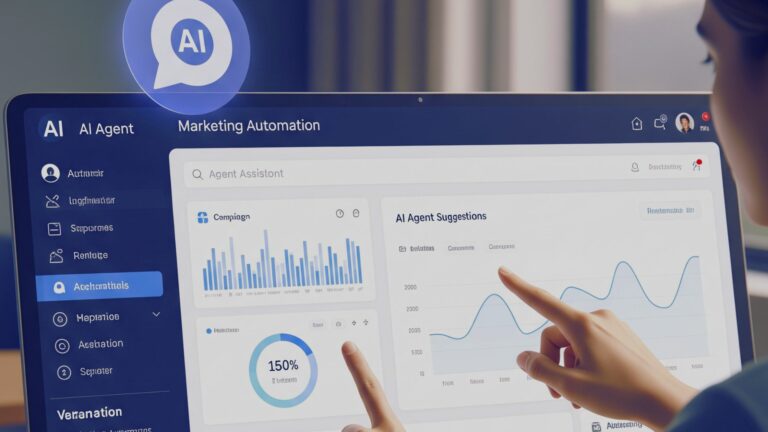Software integration holds immense importance in the age of digitization. Integrating a software solution with a suitable third-party app or service helps you enhance its performance. By blending the data and functionality of two platforms, you can allow your team to work on a centralised interface. This prevents users from switching between different software to perform specific tasks.
MuleSoft helps you drive digitization within your organisation by automating your workflows and integrating suitable platforms. However, you need to keep track of the performance of your integrations and API programmes to check the efficiency of your project.
Before you integrate your software solution with an application or a service, make sure you identify and clearly define the right KPIs (key performance indicators). These metrics quantify the integration project’s performance and help you assess its success. By helping you understand what went wrong and what worked, they help you make important business decisions.
Before we discuss the different MuleSoft integration performance metrics, it is important to note that different personas often track different metrics. Every team and department within an organisation has different needs and reasons to track specific integration metrics. For example, the integration and API metrics a developer is interested in will be completely different from the ones an operations head will want to assess.
Keeping this in mind, let us understand some of the most important MuleSoft integration performance metrics for different teams within an organisation.
Metrics for the development team
The development team within an organisation will be interested in the technical aspects of an integration that affect your application’s performance and efficiency. Here are a few important MuleSoft integration performance metrics a development team would be interested in:
Application monitoring
Application or platform monitoring involves the collection of log data to help developers track the availability, use of resources, bugs, and performance changes within the application that affect the user experience.
While assessing this metric, the development team’s focus should be on tracking the APIs’ performance throughout the integration project. This involves keeping track of success and error rates, incidents, defects, etc.
Application productivity
Developers are directly responsible for your application’s productivity. While looking into this metric, your development team should analyse aspects like development effort, reuse rates, API consumption rates, etc., to ensure smooth performance.
Application quality
Just like the application’s productivity, its quality is something your development team should be interested in measuring. While analysing this KPI, developers should look into policy compliance metrics, code coverage, and other relevant factors that determine your application’s quality.
Metrics for the operations team
While your development team is interested in measuring metrics related to the technical aspects of the integration and your application, your operations team would want to measure aspects related to the availability and scalability of the system.
Here are a few important KPIs an operations team would want to look into to measure MuleSoft integration performance:
Platform scalability and availability
Your operations team should ensure that the integrated platform is scalable according to dynamic circumstances. It is also responsible for checking whether the system is available for the users at all times. While looking into this KPI, your operations team should analyse factors like system uptime and resource usage by the system, such as CPU utilisation, memory, etc.
Application monitoring
Especially if you are working with a DevOps team, the professionals responsible for handling operations will be interested in application or platform monitoring along with the developers. Here, they would track the API’s performance, response time, defects, success and error rates, incidents, etc., along with the development team.
Metrics for the IT management team
Your IT management team will be interested in the administrative aspects of your integration along with the platform’s technicalities. It will work in close association with your development and operation teams to bring your project to fruition.
Your IT management team should take a look at the following crucial MuleSoft integration performance metrics:
Platform cost, performance, and usage
IT managers will always be interested in tracking your application’s performance stats, taking into consideration the throughput and response times. They will also be interested in the cost that went into building the integration or application to use the numbers in other analyses. Moreover, an IT management team looks into the application density in terms of the number of applications deployed per CPU to measure the integration performance.
System quality
Another important factor your IT management team will be interested in is the quality of the system that carried out the integration. This involves tracking the error and success rates, code coverage, etc. The team will also engage in the testing and refactoring of defects, incidents, and system downtime to measure its performance.
Consumption rate
Your IT management team may also show interest in measuring the use of assets as well as the consumption rate according to specific channels, lines of business teams, and other relevant factors.
Platform productivity
Finally, IT managers would want to assess how productive your integration is by tracking the development and quality assessment (QA) efforts made by your team.
Metrics for business leaders
Business leaders are corporate professionals who are not directly concerned with the technical aspects of your MuleSoft integration project. They are more concerned about conversion rates, app usage, and other factors that help them grow their venture.
Here are a few important metrics that interest most business leaders:
Platform usage
Every business leader is interested in measuring platform usage in terms of the total cost of ownership (TCO), productivity gains, return on investment (ROI), customer satisfaction, etc.
Consumption
Business leaders are also interested in the resources consumed and would look into metrics like the reusage rate of your assets and integrations. They may also track consumption rates by LOB, channel, etc., to measure the integration’s performance.
Business process monitoring
Business process monitoring (BPM) is often one of the primary concerns of business leaders. Here, they will be interested in tracking revenue generated from specific channels, customer conversion rates, and other relevant factors that show them the profitability of your integration project.
Find more on MuleSoft Integration
Mulesoft Integration Use Cases
How to Choose the Right Salesforce CRM Integration Tool for your Business










